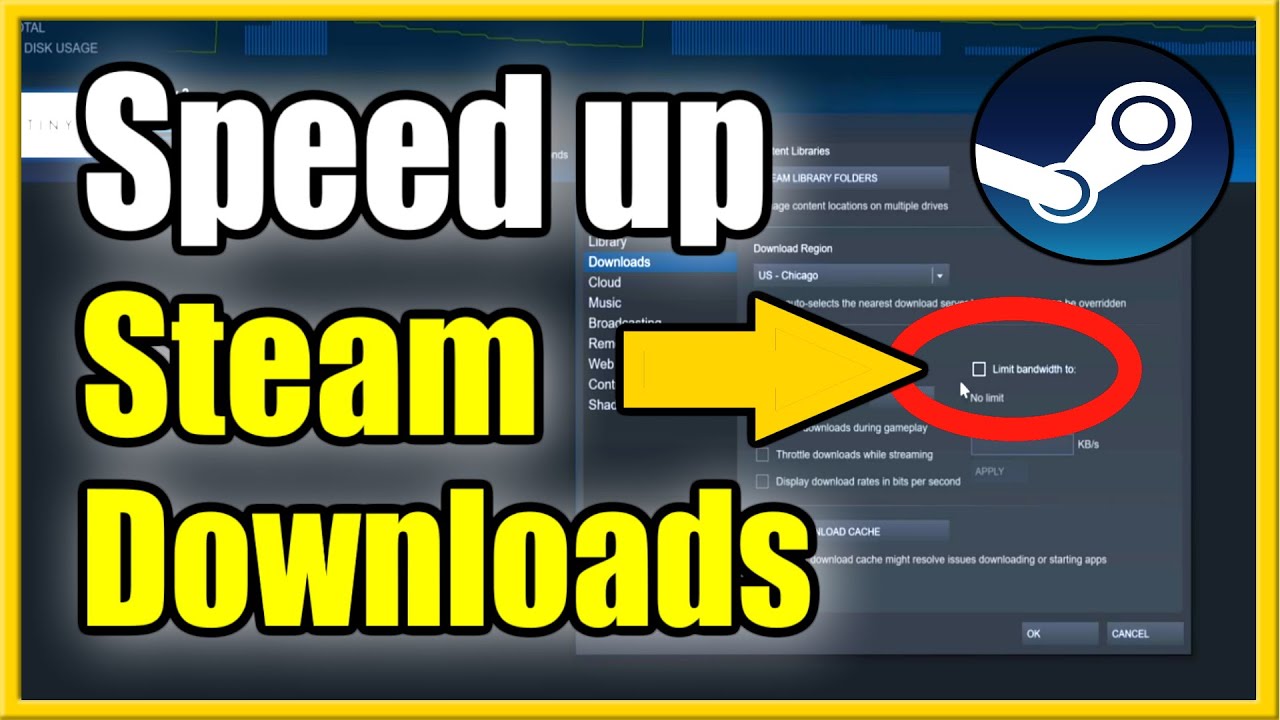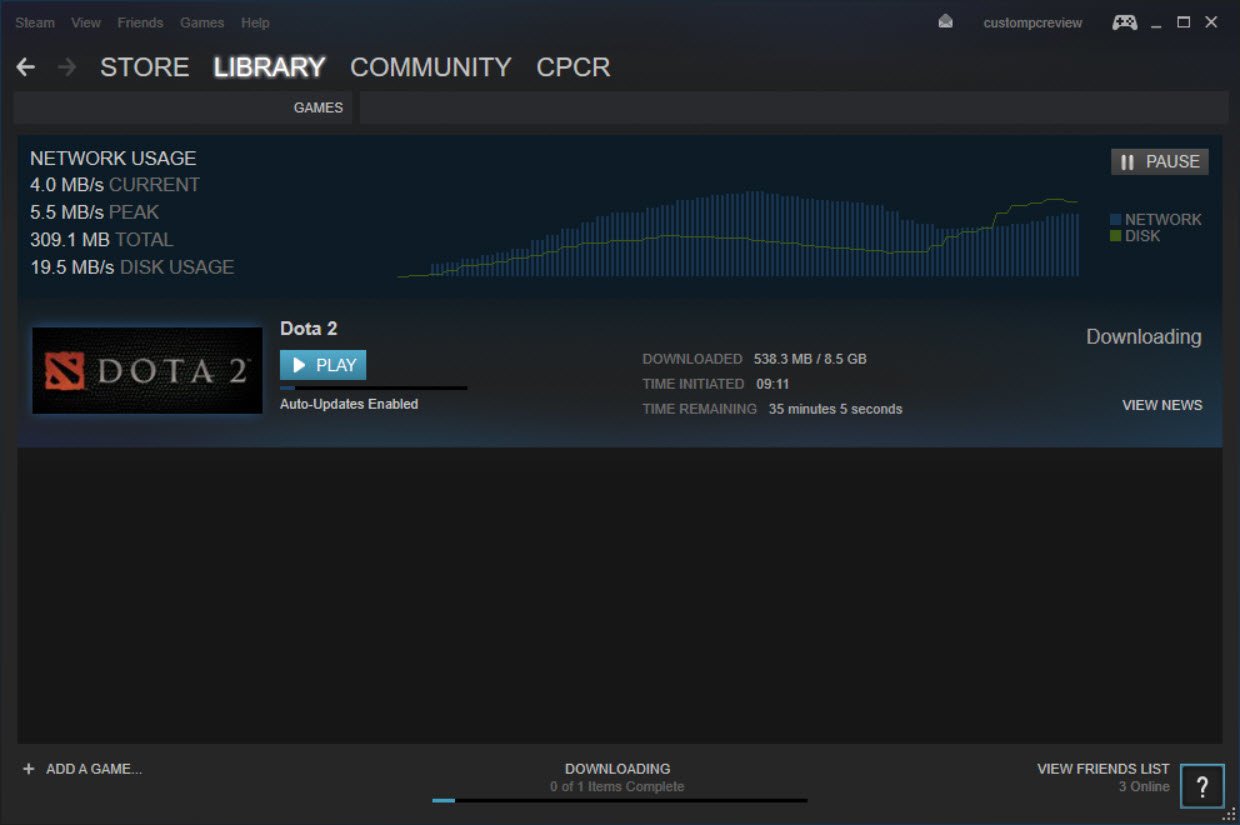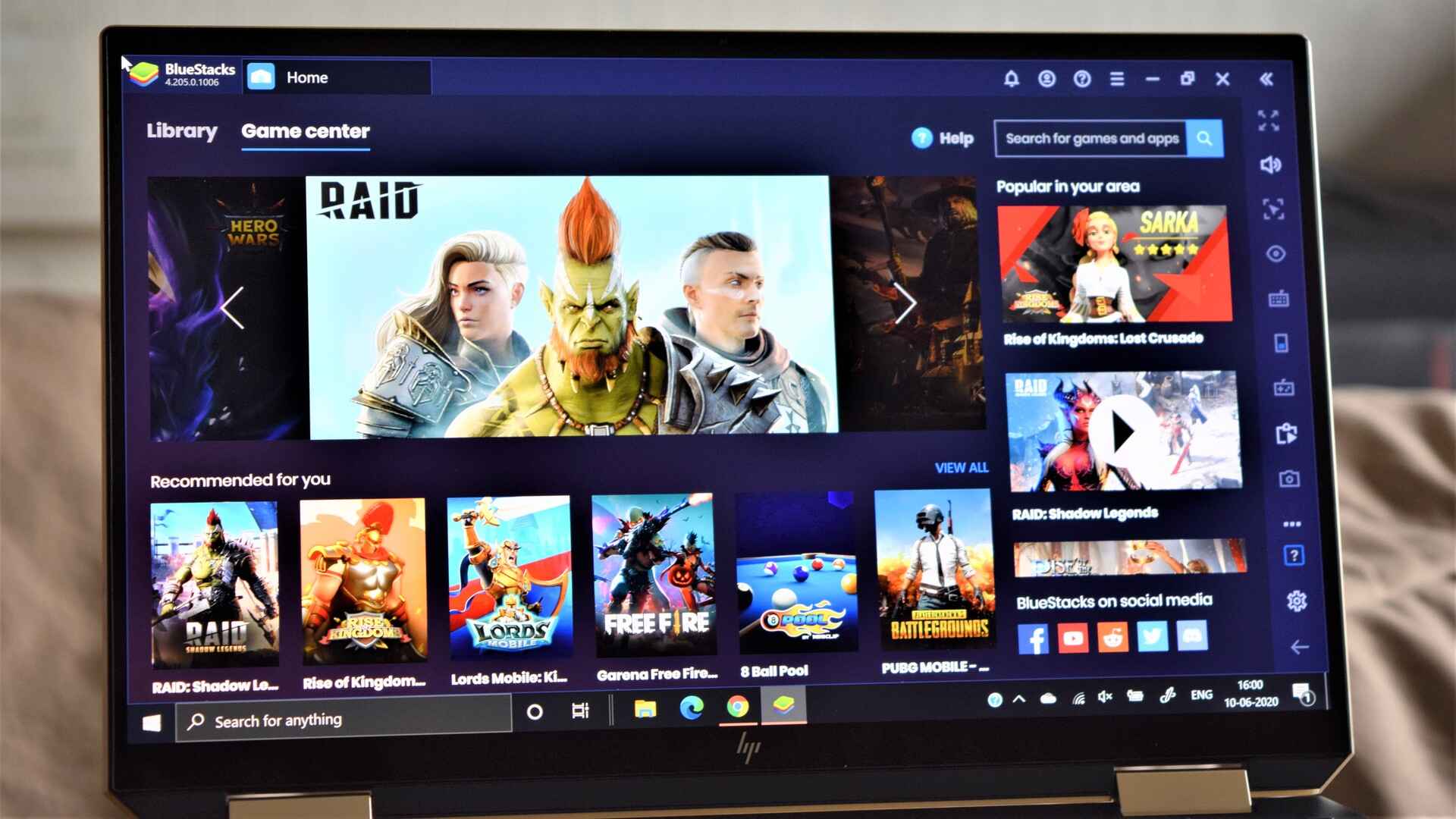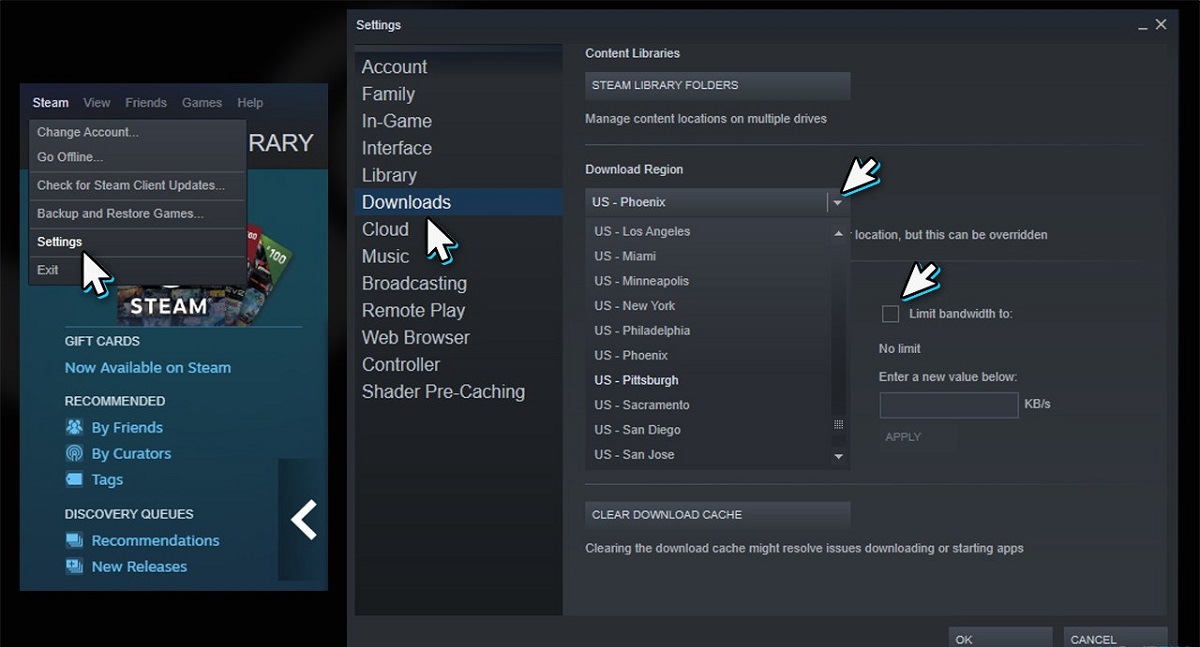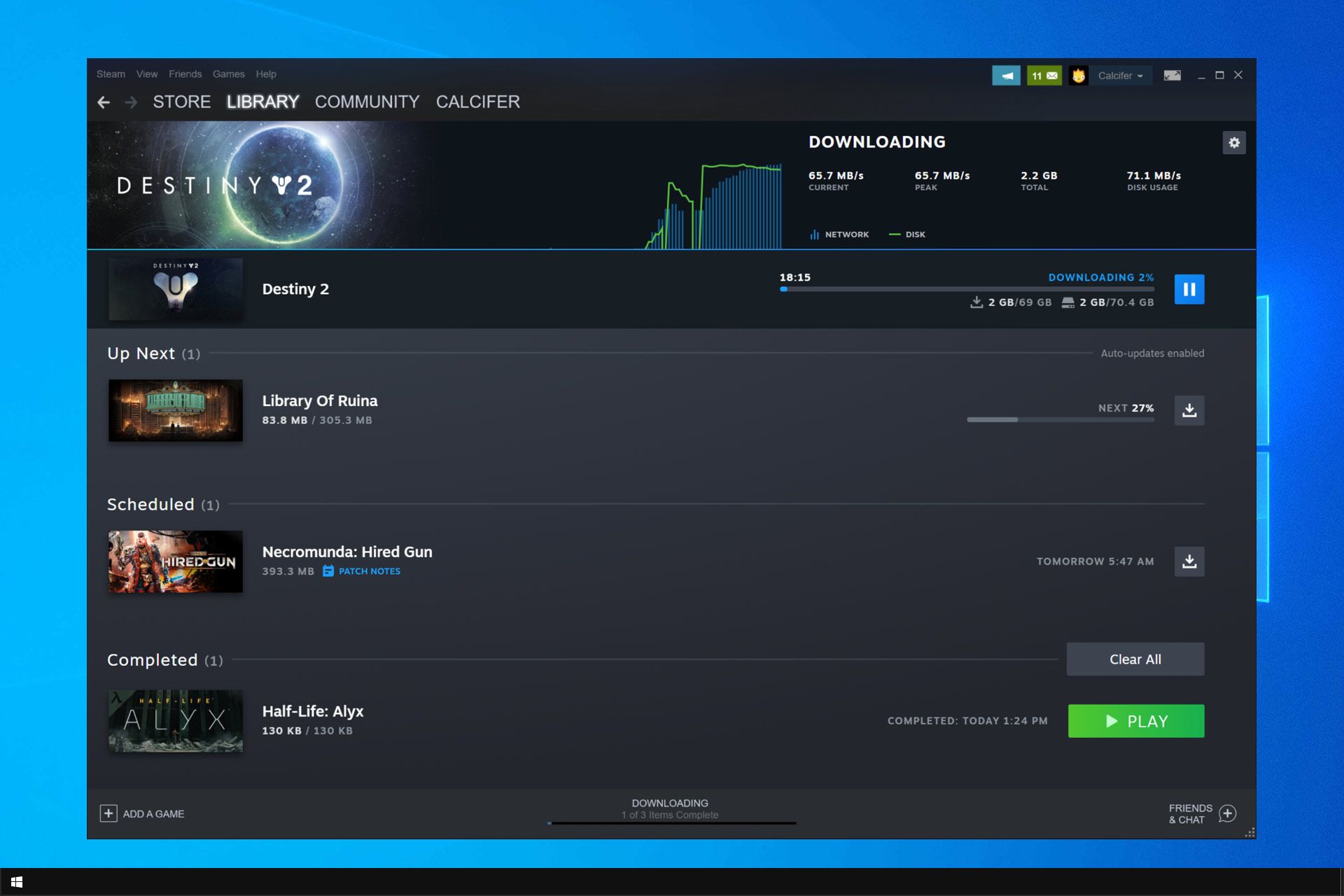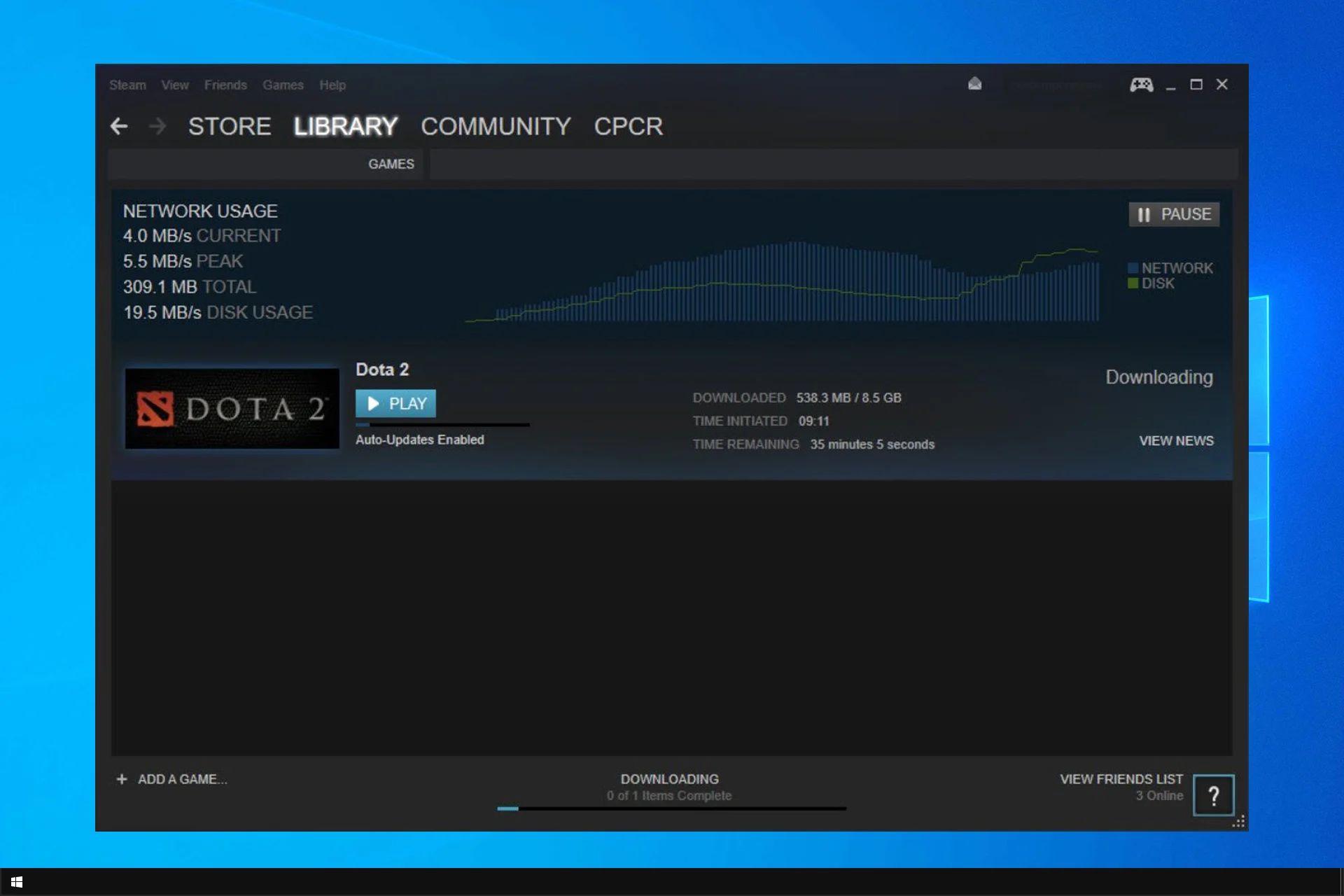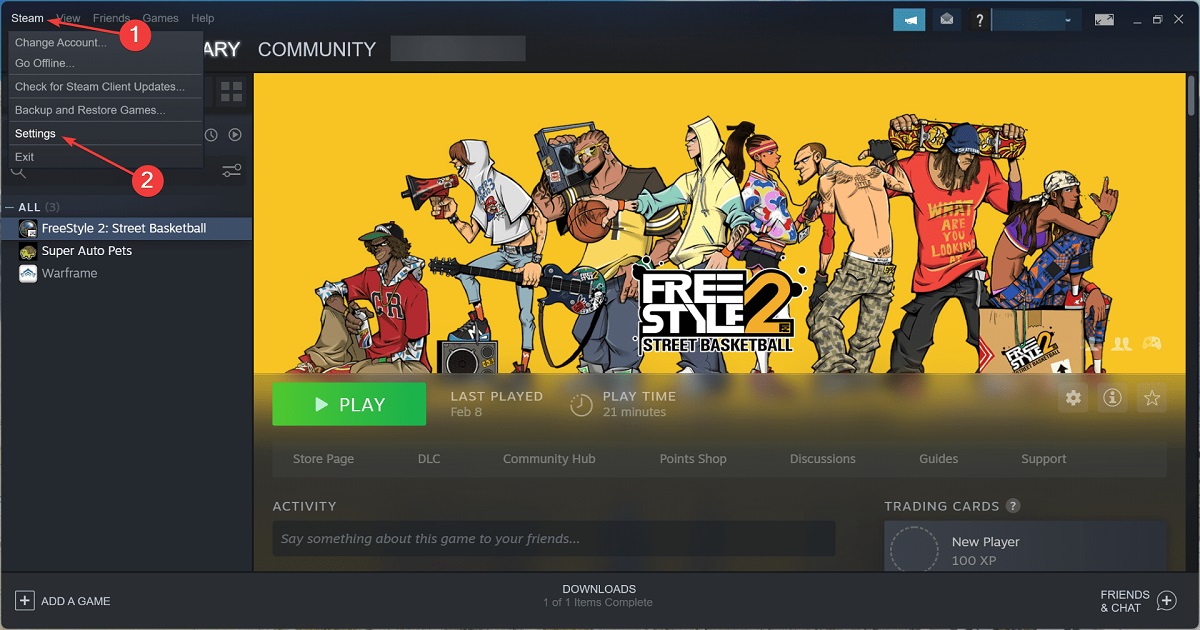Introduction
When it comes to downloading games and updates on Steam, a slow internet connection can be frustrating and time-consuming. Fortunately, there are several steps you can take to optimize your download speed on the platform. By following these techniques, you can make the most out of your internet connection and enjoy faster downloads on Steam.
In this article, we will guide you through some effective methods to enhance your download speed on Steam. Whether you’re experiencing sluggish downloads or simply want to speed up the process, these tips will help you get the most out of your gaming experience.
Before we delve into the solutions, it is crucial to note that the download speed on Steam can be influenced by multiple factors, including your internet service provider’s (ISP) network congestion, the size of the game or update, and the server’s load. However, by optimizing your settings, you can still significantly improve your download speeds.
So, if you’re ready to turbocharge your downloading experience on Steam, let’s jump right in and explore some effective techniques to make your downloads faster!
Check your Internet Connection
The first step to improving your download speed on Steam is to ensure a stable and fast internet connection. Here are a few key things you can do:
- Connect to a Fast Network: Make sure you’re connected to a high-speed internet connection, such as a broadband or fiber optic connection. Avoid using unreliable or slow Wi-Fi networks, especially if you’re downloading large files.
- Check Your Internet Speed: Use an online speed test tool to verify your internet speed. If you’re not getting the speeds you’re paying for, contact your ISP to address any issues or consider upgrading your internet plan.
- Reduce Network Congestion: If possible, schedule your downloads during off-peak hours when internet traffic is lower. This can help minimize network congestion and improve your download speed.
By ensuring that your internet connection is stable and fast, you’re setting a solid foundation for faster downloads on Steam. Now let’s move on to the next step – changing your download region.
Change your Download Region
The download region you have selected in Steam can affect your download speed. By choosing a server closer to your location or one with less traffic, you can potentially improve your download speeds. Here’s how you can change your download region:
- Open Steam Settings: Launch the Steam client and click on “Steam” in the upper left corner. From the dropdown menu, select “Settings” to open the settings window.
- Choose Download tab: In the settings window, click on the “Downloads” tab located on the left-hand side.
- Select a New Download Region: Under the “Download Region” section, click on the drop-down menu and choose a different region closer to your location. If you’re uncertain, you can try experimenting with different nearby regions to find the one that offers the best download speeds.
- Save Changes: Click on the “OK” button to save the changes and close the settings window.
After changing your download region, restart Steam for the new settings to take effect. Once you’re back in Steam, check if the download speeds have improved. If not, you can try another nearby region or move on to the next step.
Changing your download region can be an effective method for boosting your download speeds on Steam. However, if this doesn’t significantly improve your download speed, don’t worry – there are more steps you can take to optimize your downloads. Let’s explore the next method: limiting your bandwidth.
Limit your Bandwidth
Another method to speed up your downloads on Steam is to allocate a specific amount of bandwidth to Steam downloads. By limiting the amount of bandwidth used by Steam, you can prevent it from hogging all of your internet speed, allowing other applications to run smoothly while downloading. Here’s how you can do it:
- Open Steam Settings: Launch the Steam client and click on “Steam” in the upper left corner. From the dropdown menu, select “Settings” to open the settings window.
- Choose Downloads + Cloud tab: In the settings window, click on the “Downloads + Cloud” tab located on the left-hand side.
- Adjust the Bandwidth Limit: Under the “Download Restrictions” section, you will find the option to limit your bandwidth. You can either select a preset limit or customize it by entering the desired value in kilobits per second (Kbps).
- Save Changes: Click on the “OK” button to save the changes and close the settings window.
By setting a bandwidth limit, you can ensure that Steam doesn’t consume all of your available internet speed, allowing you to multitask while downloading games or updates. This can be particularly useful if you have a limited internet connection or if you need to use other applications while downloading on Steam.
Now that you’ve limited your bandwidth, let’s move on to the next step – clearing the Steam download cache.
Clear Steam Download Cache
If your download speed on Steam is still slow, clearing the download cache can help resolve any potential issues that may be causing the slowdown. The download cache stores temporary files and can sometimes become corrupted, impacting the download speed. Follow these steps to clear the download cache in Steam:
- Open Steam Settings: Launch the Steam client and click on “Steam” in the upper left corner. From the dropdown menu, select “Settings” to open the settings window.
- Choose Downloads + Cloud tab: In the settings window, click on the “Downloads + Cloud” tab located on the left-hand side.
- Click on “Clear Download Cache”: Under the “Download” section, you will find the option “Clear Download Cache.” Click on the button to initiate the cache clearing process.
- Confirm the Action: Steam will prompt you to confirm the action. Click on “OK” to proceed with clearing the download cache.
Once the cache is cleared, close and restart Steam for the changes to take effect. This process will not delete any of your game files or game saves. It simply removes any corrupted or temporary files that may affect your download speed.
By clearing the download cache, you can potentially resolve any underlying issues and improve the download speed on Steam. If the speed still doesn’t improve, don’t worry – there are further steps you can take to boost your download speeds. Let’s move on to disabling background applications.
Disable Background Applications
Running multiple applications in the background while downloading on Steam can consume valuable system resources, causing your download speed to suffer. By disabling unnecessary background applications, you can free up resources and potentially improve your download speeds. Here’s how you can do it:
- Close Unnecessary Programs: Before starting your download on Steam, close any unnecessary programs and applications running in the background. Look for applications such as torrent clients, media players, or other resource-intensive software.
- Disable Startup Programs: Some programs automatically start running in the background every time you start your computer. These programs can consume resources and impact your download speed. Disable any unnecessary startup programs by accessing the Task Manager (Ctrl + Shift + Esc) and navigating to the “Startup” tab.
- Pause Syncing or Backup Services: If you use cloud syncing or backup services, such as Dropbox or Google Drive, consider pausing or temporarily disabling the services while downloading on Steam. These services can consume bandwidth and system resources, affecting your download speed.
By reducing the number of background applications and disabling unnecessary startup programs, you can allocate more system resources to Steam, resulting in improved download speeds. Remember to re-enable any disabled programs or services once your download is complete.
If your download speed on Steam is still slow, it’s time to move on to the next step – verifying the integrity of your game files.
Verify Integrity of Game Files
If your download speed is consistently slow or you’re experiencing issues with a specific game, verifying the integrity of the game files can help resolve any corrupted or missing files that may be affecting your download speed. Here’s how you can verify the integrity of game files on Steam:
- Open Steam Library: Launch the Steam client and click on “Library” at the top to view your installed games.
- Right-click on the Game: Right-click on the game that is experiencing issues or slow download speeds and select “Properties” from the dropdown menu.
- Navigate to the “Local Files” tab: In the properties window, click on the “Local Files” tab located on the left-hand side.
- Click on “Verify Integrity of Game Files”: Under the “Local Files” tab, click on the “Verify Integrity of Game Files” button. Steam will then compare your game files with the latest version available and repair or replace any corrupted or missing files.
The verification process may take some time, depending on the size and complexity of the game. Once the process is complete, Steam will display a message indicating the status of the verification. If any issues are found, Steam will automatically fix them.
Verifying the integrity of game files can help improve your download speed by ensuring that all necessary files are intact and in proper working condition. If your download speed doesn’t improve after this step, there are a few more troubleshooting methods you can try. Let’s move on to disabling the Windows Firewall or antivirus software.
Disable Windows Firewall or Antivirus Software
In some cases, the Windows Firewall or antivirus software on your computer can interfere with the Steam download process, resulting in slower speeds. Temporarily disabling these security measures can help improve your download speed. Here’s how you can do it:
- Disable Windows Firewall: Press the Windows key + R to open the Run dialog box. Type “control firewall.cpl” and press Enter to open the Windows Firewall settings. In the settings window, click on “Turn Windows Defender Firewall on or off” on the left-hand side. Select the option to “Turn off Windows Defender Firewall” for both the private and public network settings. Click “OK” to save the changes.
- Disable Antivirus Software: The exact steps to disable antivirus software can vary depending on the program you are using. Generally, you can find an option to disable or turn off the antivirus protection within the program’s settings or by right-clicking on the antivirus icon in the system tray.
Remember to only disable these security measures temporarily and re-enable them once you’ve completed your download on Steam. Disabling your firewall or antivirus software leaves your computer more vulnerable to threats, so it’s essential to restore these safeguards as soon as possible.
If disabling the firewall or antivirus software doesn’t improve your download speed, it’s time to try another troubleshooting step. Let’s proceed to the next method – restarting your modem/router.
Restart your Modem/Router
Restarting your modem or router can often help resolve network issues that may be contributing to slow download speeds on Steam. Sometimes, the device needs a reset to establish a fresh connection. Here’s how you can restart your modem or router:
- Power off your Modem/Router: Locate the power button on your modem or router and switch it off. If there is no power button, unplug the power cable from the device.
- Wait for a Few Minutes: Give your modem or router a few minutes to completely power off and clear any remaining data in its memory.
- Power on your Modem/Router: Plug the power cable back into the device or press the power button to switch it back on.
- Wait for the Connection to Reestablish: Give your modem or router a few minutes to establish a stable connection. This process may take a few minutes, so be patient.
Once your modem/router is back online, reconnect to your internet network and check if your download speed on Steam has improved. Restarting your modem/router can help refresh the network connection and eliminate any temporary glitches that may be impacting the download speed.
If restarting your modem/router doesn’t provide satisfactory results, there are still a few more steps you can take to enhance your download speed on Steam. Let’s explore the next method – using a wired connection.
Use a Wired Connection
Using a wired connection instead of Wi-Fi can significantly improve your download speeds on Steam. A wired connection offers a more stable and reliable connection, reducing the chances of signal interference or loss. Here’s how you can switch to a wired connection:
- Connect an Ethernet Cable: Locate the Ethernet port on your computer or gaming device and connect one end of the Ethernet cable to it.
- Connect to the Router/Modem: Take the other end of the Ethernet cable and plug it into one of the available LAN ports on your modem or router.
- Disable Wi-Fi: To ensure that your device uses the wired connection, disable or disconnect from any Wi-Fi networks. This step will prevent your device from switching back to Wi-Fi if the connection is available.
Using a wired connection eliminates the potential interference and signal loss that can occur with Wi-Fi networks. This method provides a more stable and consistent connection, leading to faster download speeds on Steam.
If a wired connection is not feasible due to distance or other constraints, consider positioning yourself closer to the Wi-Fi router to improve signal strength. Additionally, reducing Wi-Fi congestion by limiting the number of devices connected to the network can also help improve download speeds.
Now that you have learned various techniques to optimize your download speed on Steam, try implementing these methods and enjoy faster downloads of your favorite games and updates!
Conclusion
Optimizing your download speed on Steam is essential for a smooth gaming experience. Slow downloads can be frustrating and can consume valuable gaming time. By applying the techniques outlined in this article, you can significantly enhance your download speed and enjoy faster downloads on Steam.
We started by checking our internet connection to ensure we have a stable and fast connection. Then, we changed our download region to find a server closer to our location or with less traffic. Further, we limited our bandwidth to prevent Steam from hogging all the available internet speed.
If the speed did not improve, we suggested clearing the Steam download cache to resolve any potential issues. Disabling background applications and verifying the integrity of game files were additional steps to address any software-related problems that might affect download speed.
In some cases, disabling the Windows Firewall or antivirus software can also help improve the download speed on Steam, but remember to re-enable them as soon as the download is complete.
If all else fails, restarting your modem/router and using a wired connection can provide a more stable and reliable network connection, resulting in faster download speeds. However, it’s important to remember that the actual speed can also depend on your internet service provider and the server load.
By following these steps, you can optimize your download speed on Steam and enjoy a seamless gaming experience. So, apply these techniques and get ready to dive into your favorite games without the hassle of slow downloads!







